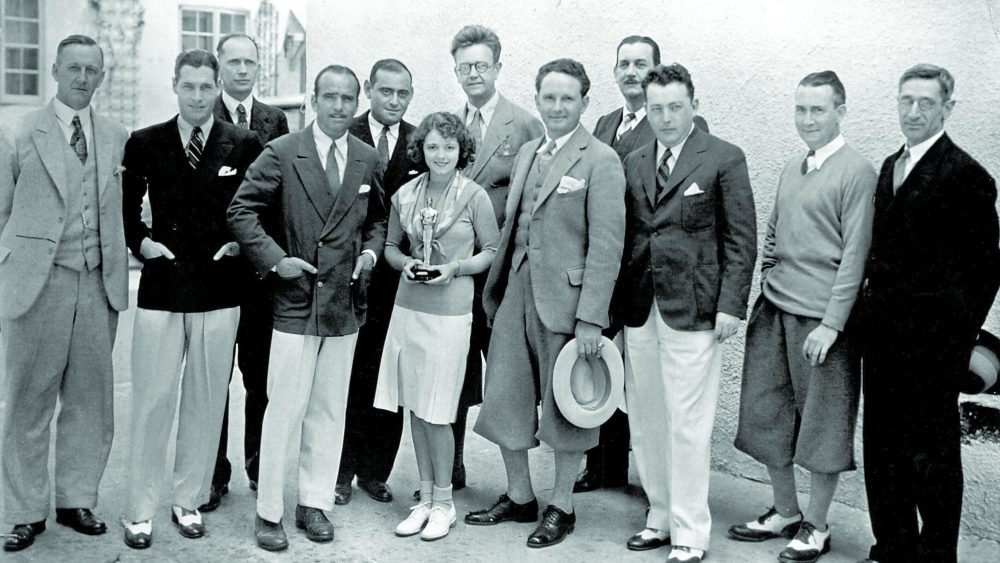Millions of moviegoers think the Academy of Motion Picture Arts & Sciences has one purpose: To hand out Oscars. Members know that’s not true and veteran AMPAS exec Bruce Davis reveals that awards were initially a low priority for the organization, in his new book “The Academy and the Award: The Coming of Age of Oscar and the Academy of Motion Picture Arts and Sciences” (Brandeis University Press) about the early decades of the group.
Davis also makes clear that the group, formed in 1927 as movies were undergoing seismic shifts, made decisions that forever changed the way we watch movies — but that had nothing to do with Oscar.
The org was the brainchild of MGM exec Louis B. Mayer, whose goal was “to stymie the formation of craft unions,” Davis writes.
So for several years the Acad became an arbiter of labor disputes, which nearly led to its downfall.
But even before that, AMPAS leaders tackled the issue of moviegoing, since the new fly-by-night entertainment had evolved into an industry.
In conversation, Davis tells Variety that while researching for his book, “I realized what a Wild West moviegoing was through the whole silent period.”
Academy reps conducted extensive studies and established standards for theater screen illumination, detailed the growing use of incandescent lighting on film sets, and led the drive for a single standard screen size that became known as the Academy Ratio.
Significantly, as the book states, the Acad became “a clearinghouse” for sound challenges and ways to train sound workers “for an industry that was nearly devoid of people who knew how to record or reproduce sound.”
Among their first objectives was “fostering understanding that their medium owed more to technology than any art form that had previously existed.”
Davis tells Variety, “Suddenly the Academy successfully imposed a quality control on the experience of going to the movies; that’s important and I don’t think the Academy has been given credit for it.”
The Acad was doing heroic work, but after a few years, the industry turned on them.
Before Hollywood guilds were created, Academy honchos decided they were labor arbiters. In the first five years, the Acad’s conciliation committee settled nearly 350 disputes between actors and producers and more than 50 between writers and producers, Davis says.
But people in the industry hated AMPAS. The org’s 1927 bylaws list five groups of members: actors, directors, writers, producers and technicians. The use of that last word has vexed behind-the-camera workers for nearly a century. But it was the producers group that caused the strife.
Davis tells Variety that 1933 was the rock bottom for AMPAS. After six years, the Acad seemed ready to fold, he writes. They were discouraged “by the steady drop in membership numbers, by the escalating financial problems, and by the organization’s failure to establish a vital role in the evolving industry.”
The Academy fired everyone and virtually shut down, due to finances and animosity toward producer members.
The Screen Writers Guild, Screen Actors Guild and Directors Guild were created 1933-1936. Eddie Cantor, second president of SAG, summed up the feeling of the new guilds by frequently proclaiming in his speeches, “The Academy must be destroyed!”
While losing support of Hollywood workers, the Academy was also facing financial hardships.
For many years, its only source of income was members’ dues. Davis writes that radio stations began carrying live broadcasts of the Academy Awards in their second year, but within an eight-year period, the Academy didn’t earn a cent, because its decision-makers found the idea of sponsorship to be distasteful.
“The biggest surprise in my research was how impoverished the Academy was through its early history,” Davis tells Variety. “The industry resisted putting Oscars on television, but it was the salvation of the organization.”
In the 21st century, there has been renewed criticism that the Academy is too parochial, favoring Hollywood movies at the expense of works from other countries. That issue has existed since its formation.
The org was designed to be elitist, accepting only top professionals. And the narrow focus was
for U.S. films.
Davis writes that when the group was forming in the first quarter of 1927, one proposed name was the Intl. Academy of Cinema Arts & Sciences. Davis notes that the word international “exceeded any realistic grasp for the infant academy and, in any case, some of its founders strongly preferred that the org restrict its focus to the U.S. industry.”
For example, the four wins for the 1948 “Hamlet,” including best picture and actor, angered many members because it was considered a foreign film. As Davis writes about the handwringing by members, “major awards went not just to foreign but to highbrow, artistic pictures.” It’s a complaint that the public has aired ever since.
Not everybody was xenophobic. In the 1940s, AMPAS prexy Walter Wanger proposed that the Academy find a way to honor films from other countries: “He was afraid that if the Academy continued to ignore most of that overseas output, the organization would soon come to look provincial in the eyes of the world.”
The idea gained traction in the 1940s, but soon hit a speedbump with the Hollywood Blacklist: There was concern about nominating a film from behind the Iron Curtain.
Starting in 1947, a committee recommended which films to consider for its one-special-honoree-each-year foreign-language Oscar. It became a competitive category in 1956 and four years later, the Academy proudly announced that invitations to participate had been issued to “every country in the free world.” That triggered a front-page story in Variety questioning what constituted the “free world,” since Russia was invited but Bulgaria wasn’t.
Finally, Acad prez Valentine Davies consulted with the U.S. State Dept. and they decided all sovereign nations were to be included, except Mainland China, Albania and maybe Hungary.
Actually, most modern criticisms of AMPAS are not new.
• There have been recent accusations that the Academy is out of touch and will soon become obsolete. Those predictions have been aired many times, beginning in 1933.
• In August 2018, AMPAS was criticized for a clumsy attempt to include the public. It proposed a “best popular movie” award and in 2022 initiated #OscarsFanFavorite and #OscarsCheerMoment. Nothing new here. In 1927, there was a plan to add a group of “fan members” to the Acad and to publish a journal aimed at moviegoers.
• There have been modern cries to shorten the TV broadcast by presenting some awards off-camera. That proposal in 2019 caused an uproar, and it was done for the 2022 ceremony, with vows it wouldn’t happen again. The idea has been regularly proposed since 1959.
• In 2012, newspapers reported that the Academy members were overwhelmingly Caucasian and male. AMPAS prexy Gregory Peck in 1967 began to expand membership to combat accusations that the group was too geriatric. And there was an outcry when the press exaggerated the number of older members who were asked to step aside.
With a proliferation of digital sites, all of these things have been reported as if they’re new.
Oscar is 95 this year and at that age, you’ve seen it all, been through it all.



